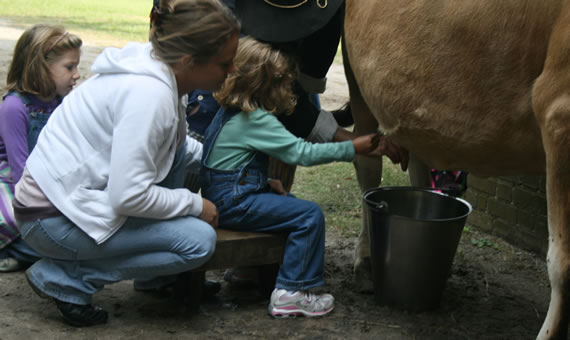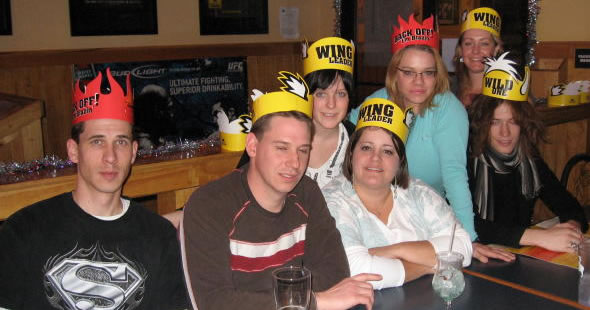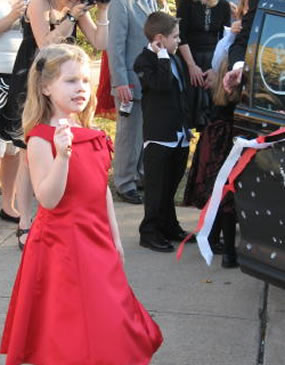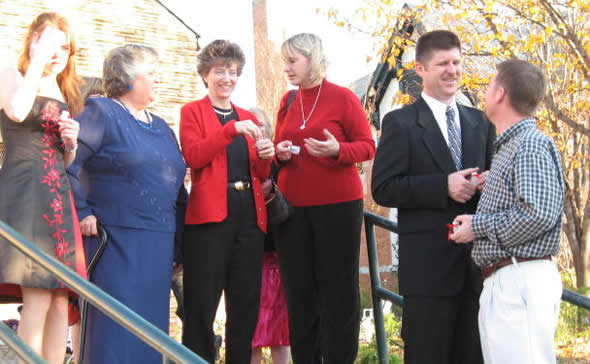“Here, Grandpa, I advise you to take this home.” The advice came from Riley Lane, 4, and “this” was a small portion of hydrangea blossom picked up from the trail at Middleton Place. Middleton is an old rice plantation outside Charleston, SC. It is a National Historic Landmark preserved in its 18th century state.
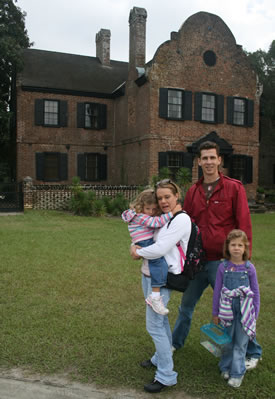
It’s a grand place for families to visit. We spent an entire afternoon there, soaking in the beauty. drinking in the history, learning new things and enjoying each others’ company. We talked to animals like water buffalo, goats, horses and cows. We talked with a blacksmith about metal working in the eighteenth and nineteenth centuries. We had experience shucking and grinding corn.
After a mid-afternoon supper, we helped milk Rio, an 18-year-old Jersey cow. Supper itself was something of a Southern country experience for the grown-ups. The girls settled for chicken fingers and fruit.
We then spent some time expatiating the grounds, touring the gardens, and (as the girls said) “venturing off into the wilderness.” Along the way, we visited an old mill on the Ashley River, next to some of the rice paddies where Middleton grew “Carolina Gold,” a strain of rice prized through the 18th, 19th and 20th centuries. Near the paddies was a terraced lawn perfect for rolling in the grass.

Earlier in the day we had the opportunity to see how to cook outdoors over open fires (much like we do in Boy Scouts. At the blacksmith shop, Jenna asked about the bellows and got something of an historical account of how bellows evolved between the 18th and mid 19th centuries. In the process, we learned several things about working metal and a few things about colonial supply and demand.
Then we had the opportunity to shuck corn using a 150-year-old machine and we ground the grain by using stones we had to turn by hand. Nearby was a clothier dressed in leather breeches, and out in the common area, Middleton Place occasionally a drummer and fife player would perform and then explain the role that drummers and fife players assumed in battle during the Revolutionary and Civil wars.
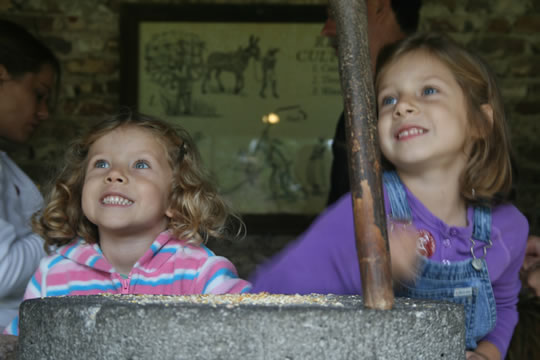
We visited Liza’s House to see how plantation slaves lived at Middleton. On one wall of Liza’s house is a registry of several hundred slaves who had been listed as Middleton’s “property” and the prices paid for them. It is as sobering as “The Wall” on the mall in Washington.
